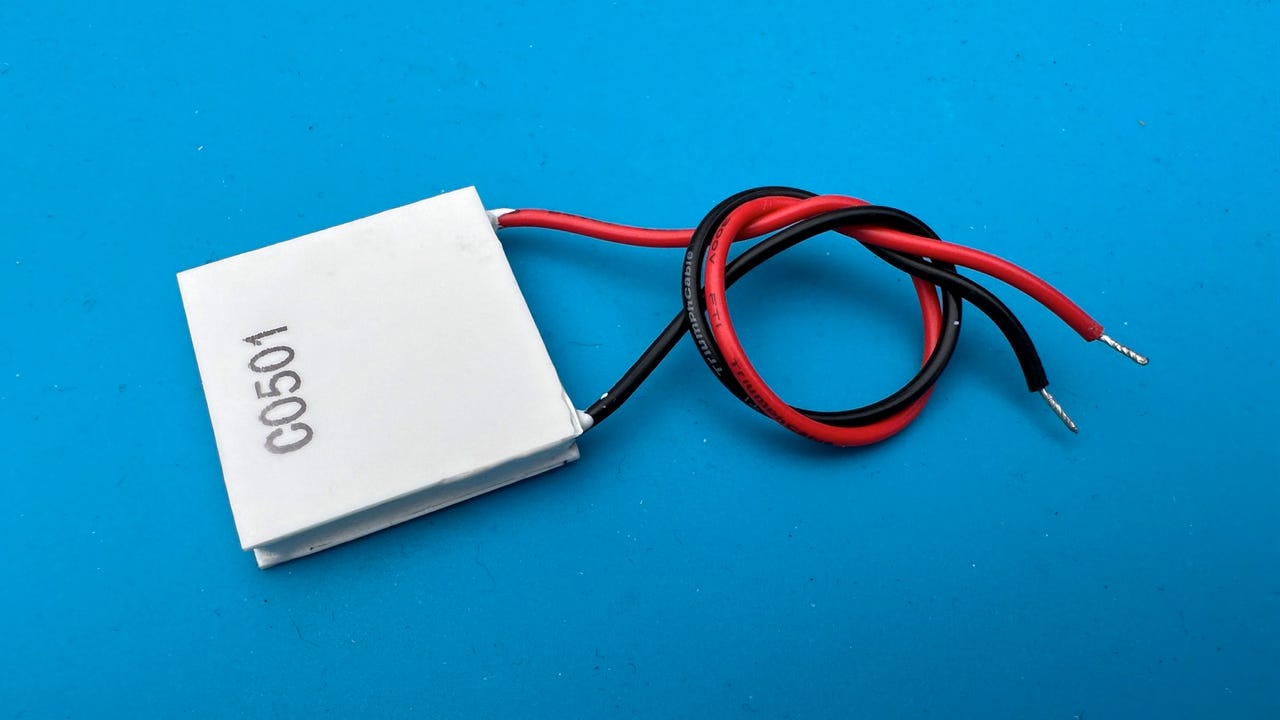
































A Peltier thermoelectric cooler module
Adrian Kingsley-Hughes/I was approached the other day for cooling advice for an SBC (single board computer) project.
Without going into unnecessary detail, the issue was that the board needed to operate in an unusually warm environment, and even with a heatsink and fan installed, the processor was running rather close to the thermal edge.
If a heatsink and fan weren't enough to cool the board, what could be done without resorting to drastic modifications? (The board in question was a Radxa Rock 5 Model B, but the solution below would work for a Raspberry Pi too.)
Also: How to cool your Raspberry Pi (and should you?)
I remember being heavily into overclocking the processors in desktop computers, and the more you push these beyond their comfort zone, the harder they work, and the more heat it generated that needs dissipating.
One solution that I used was a Peltier thermoelectric cooler module. This works by taking advantage of the Peltier effect. In simple terms, when an electric current is passed through two dissimilar conductive materials (usually a pair of semiconductors) joined together, heat is transferred from one side to the other. This results in one side becoming cooler while the other side becomes hotter.
 Hot Tags :
Tech
Our process
Computing
Hot Tags :
Tech
Our process
Computing